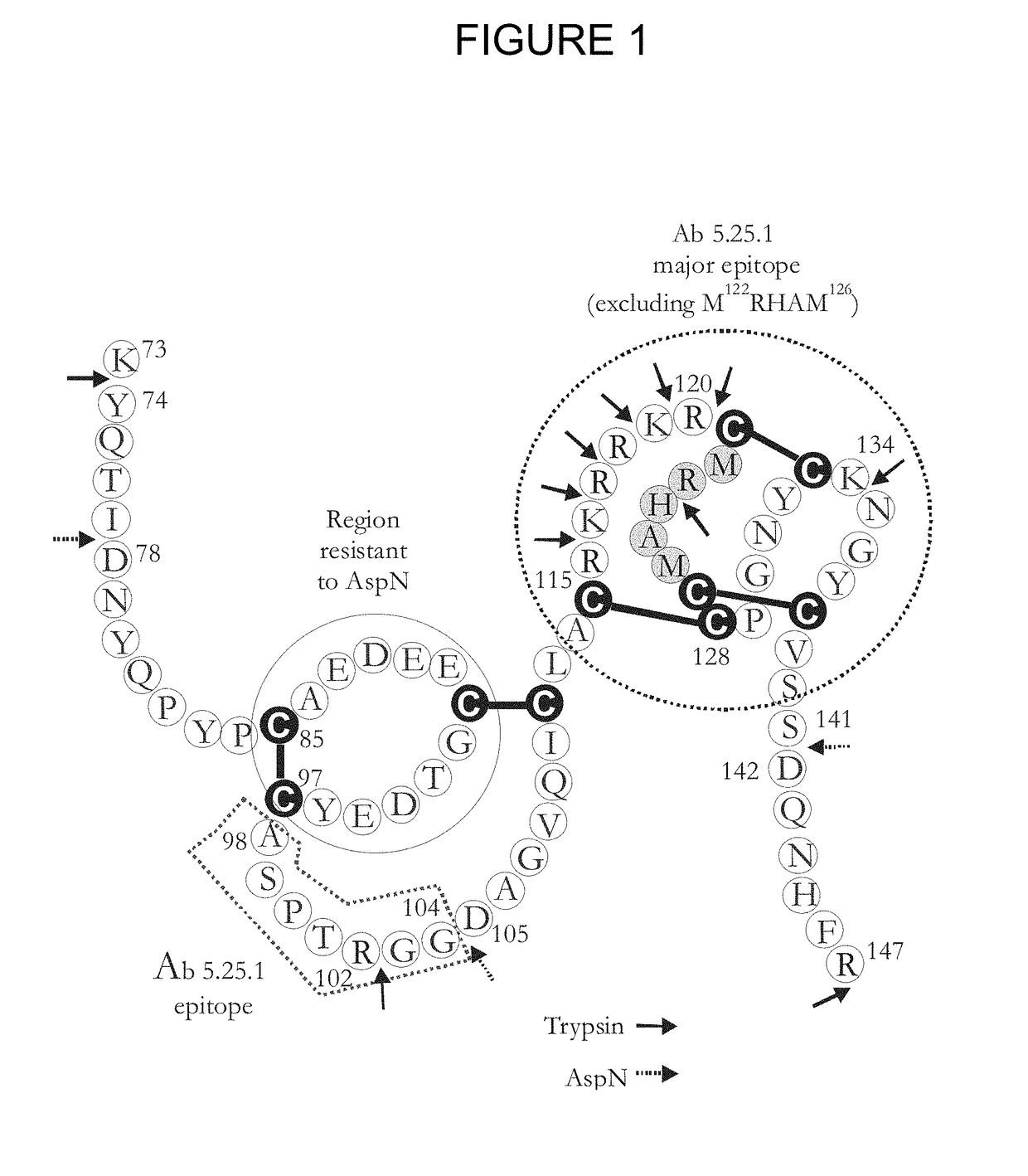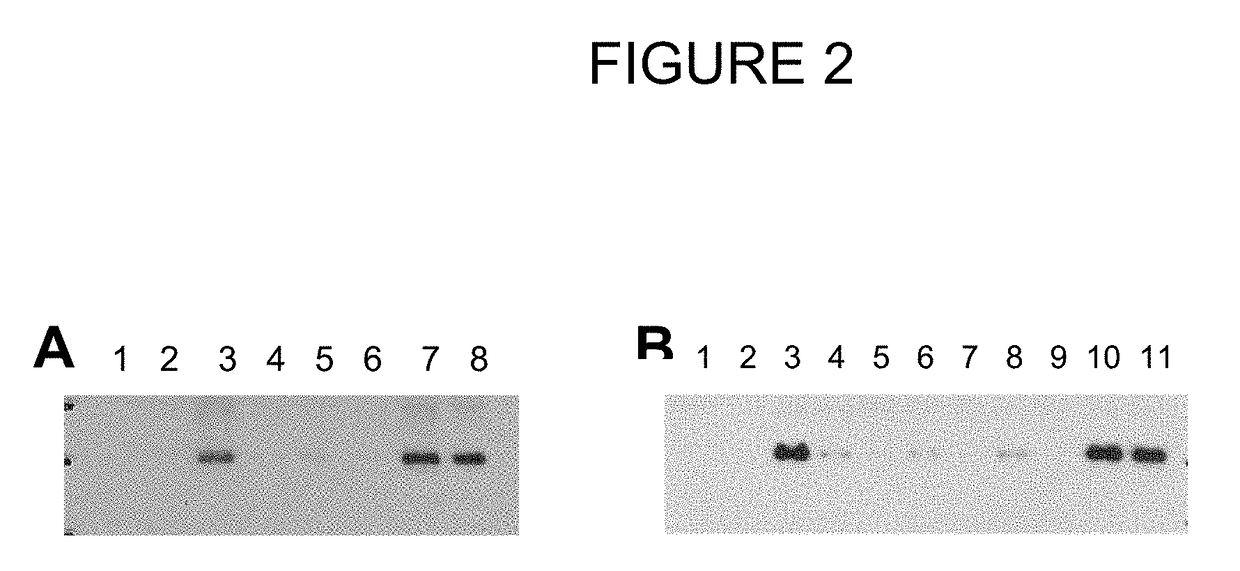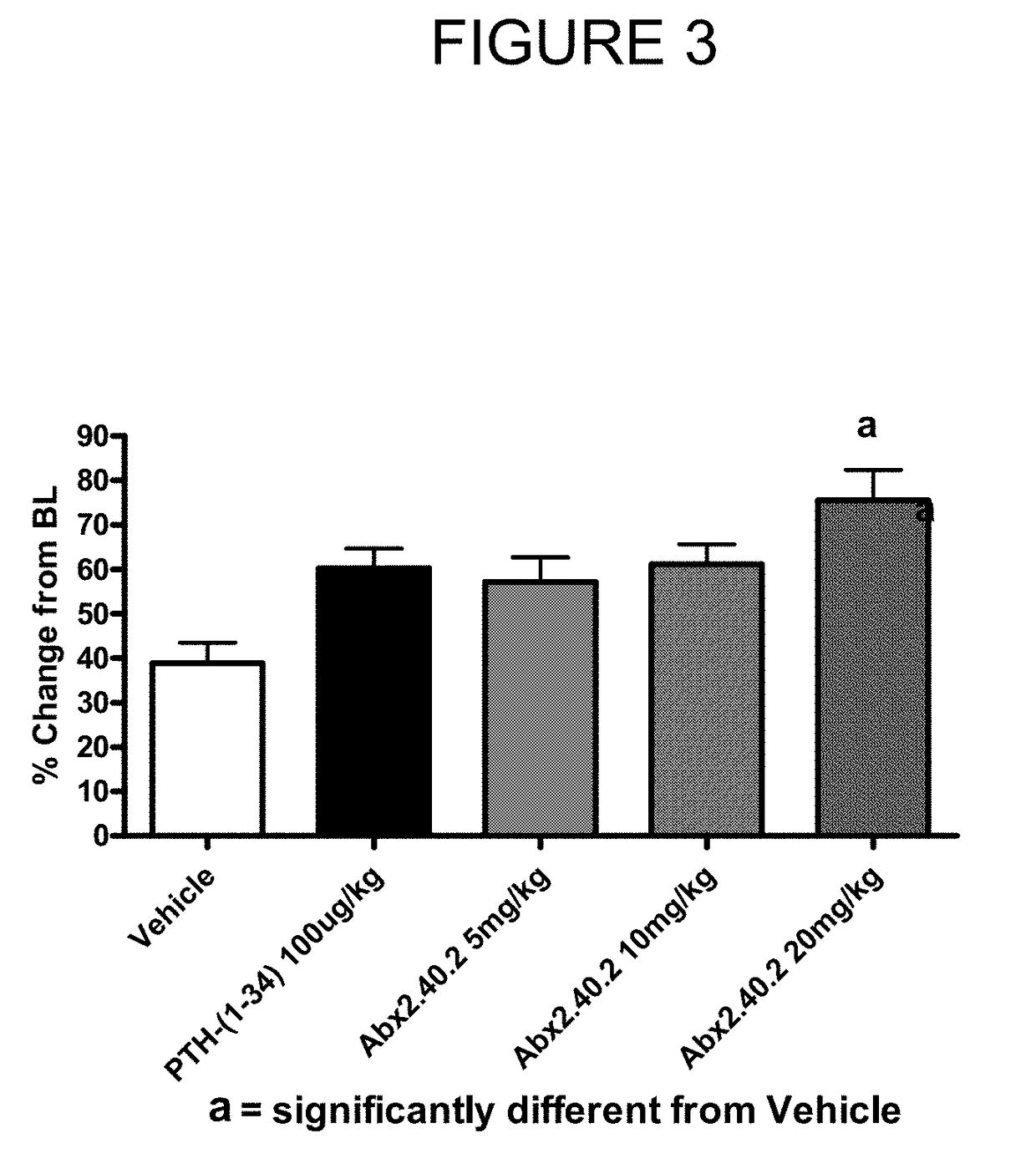Dkk1 antibodies and methods of use
a dickkopf1 and antibody technology, applied in the field of dickkopf1 antibody and antigen binding domains, can solve the problems of increasing the fragility and susceptibility of skeletal bone fracture, significant medical problems, and high cost for patients, and achieves increased bone anabolism, increased bone building rate, and increased bone anabolism
- Summary
- Abstract
- Description
- Claims
- Application Information
AI Technical Summary
Benefits of technology
Problems solved by technology
Method used
Image
Examples
example 1
[0258]Preparation of the Human DKK1 (huDKK1) Immunogen
[0259]The cloning of human DKK1 was as described in U.S. Pat. No. 6,344,541 with the following modifications. Two different epitope tagged versions of human DKK1 were used as an immunogen, one contained the FLAG epitope and the other was an fc-fusion molecule. Both epitope tags were appended to the carboxy-terminus of human DKK1 using standard molecular biology techniques obvious to those skilled in the art.
[0260]The epitope tagged versions of human DKK1 were cloned into an expression vector for expression in CHO cells. Human DKK1 variants containing either the FLAG or Fc epitopes were purified from conditioned medium for use as an antigen to generate anti-huDKK1 antibodies. Epitope-tagged huDKK1 was purified from concentrated conditioned media (CM). Other protein production and purification procedures known to those skilled in the art may also be used.
example 2
Immunization and Titering
[0261]Recombinant FLAG-tagged human DKK1 (FLAG-DKK1) and recombinant Fc-tagged human DKK1 (DKK1-fc) were used as antigens. Monoclonal antibodies against DKK1 were developed by sequentially immunizing XenoMouse® mice (Abgenix, Inc. Fremont, Calif.) (see, e.g., U.S. Pat. No. 7,435,871 and the description therein). XenoMouse animals were immunized via footpad route for all injections. Anti-DKK antibody titers in the serum from immunized XenoMouse mice were determined by ELISA.
example 3
Recovery of Lymphocytes, B-Cell Isolations, Fusions and Generation of Hybridomas
[0262]Lymph nodes were harvested and pooled from each cohort. The total effluent was collected as the CD90-negative fraction (most of these cells were expected to be B cells). The fusion was performed by mixing washed enriched B cells from above and nonsecretory myeloma P3X63Ag8.653 cells purchased from ATCC, catalogue CRL 1580 (Kearney et al, J. Immunol. 123, 1979, 1548-1550) at a ratio of 1:1. Electro-cell fusion (ECF) was performed using a fusion generator, model ECM2001, Genetronic, Inc., San Diego, Calif. The fusion chamber size used was 2.0 mL
[0263]After ECF, the cell suspensions were carefully removed from the fusion chamber under sterile conditions and transferred into a sterile tube containing the same volume of Hybridoma Culture Medium (DMEM (JRH Biosciences)). The cells were incubated and then centrifuged. The cells were resuspended in a small volume of Hybridoma Selection Medium (Hybridoma Cu...
PUM
 Login to View More
Login to View More Abstract
Description
Claims
Application Information
 Login to View More
Login to View More - R&D
- Intellectual Property
- Life Sciences
- Materials
- Tech Scout
- Unparalleled Data Quality
- Higher Quality Content
- 60% Fewer Hallucinations
Browse by: Latest US Patents, China's latest patents, Technical Efficacy Thesaurus, Application Domain, Technology Topic, Popular Technical Reports.
© 2025 PatSnap. All rights reserved.Legal|Privacy policy|Modern Slavery Act Transparency Statement|Sitemap|About US| Contact US: help@patsnap.com



